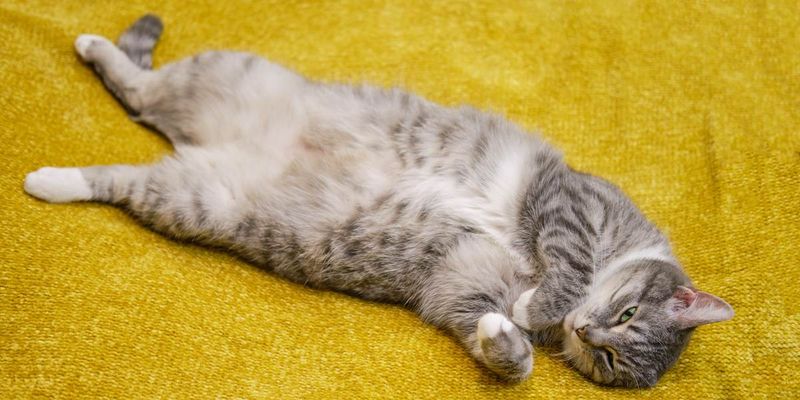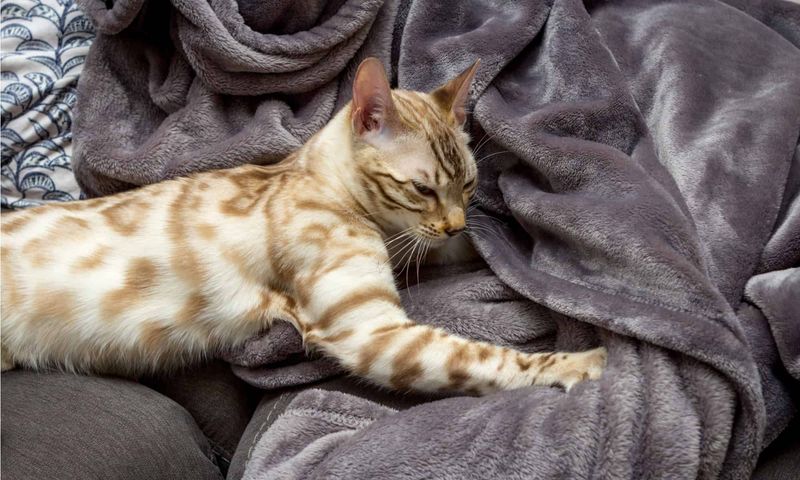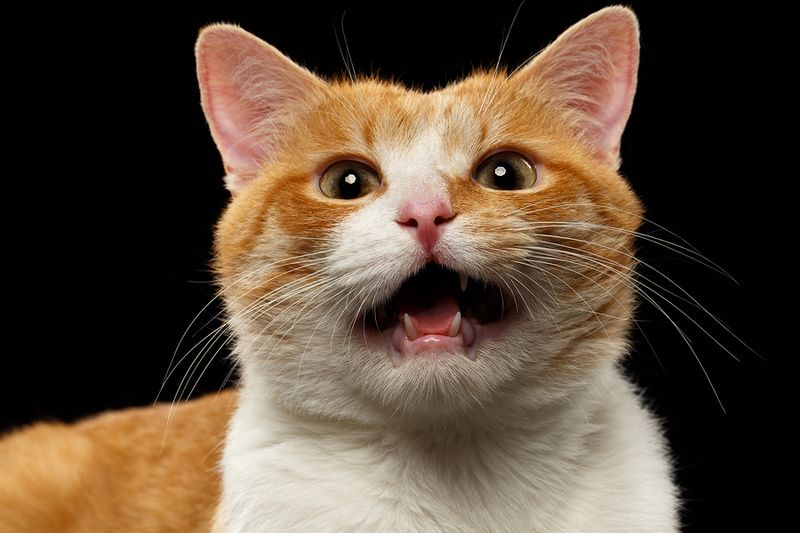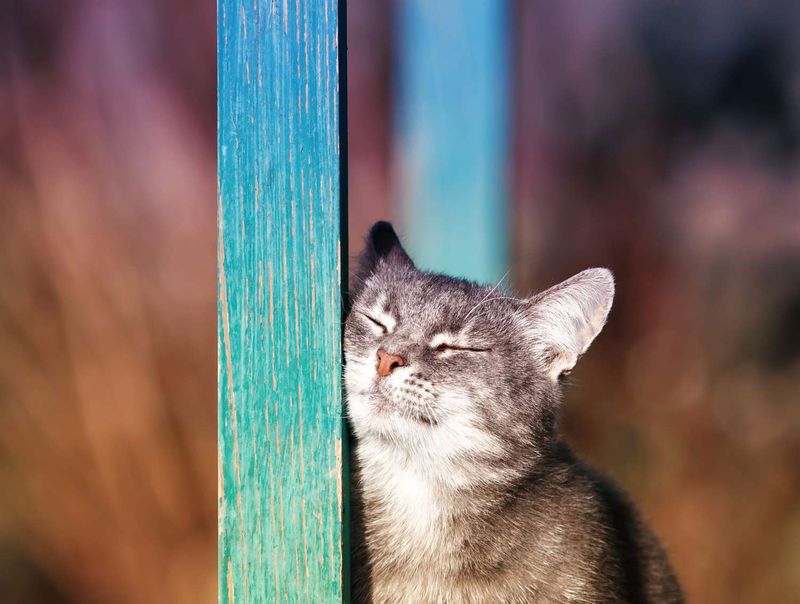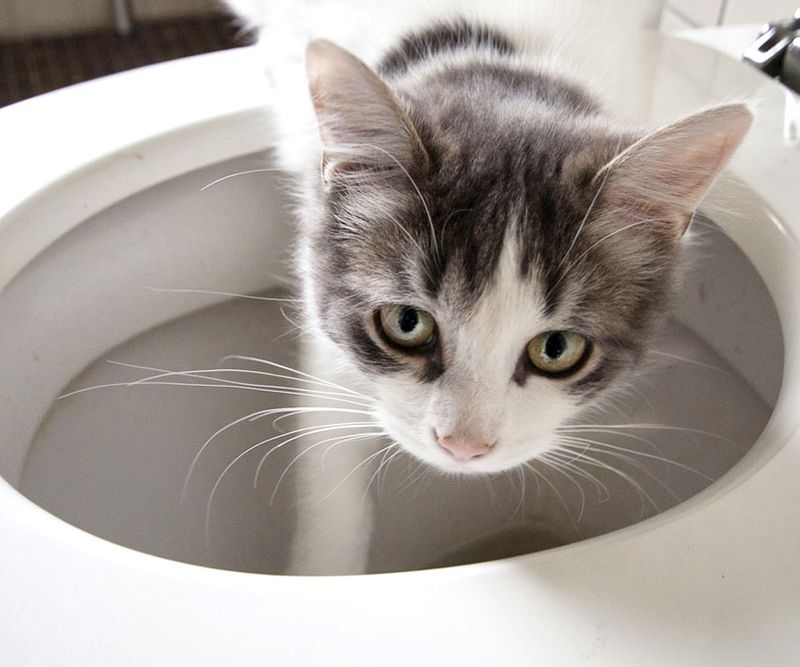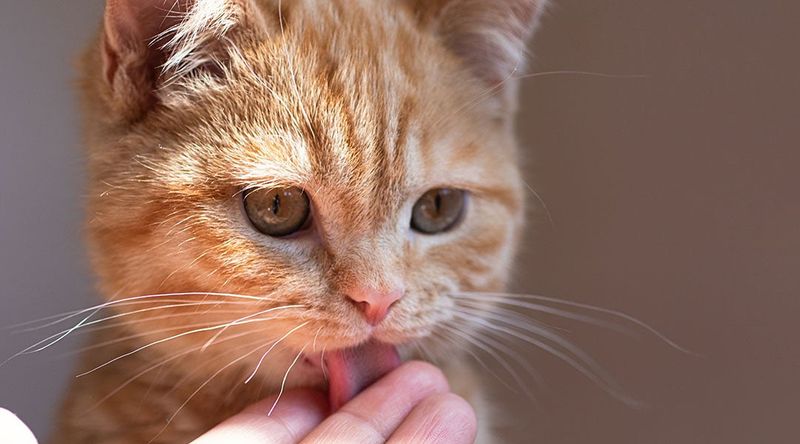📖 Table of Content:
Cats are enigmatic beings, revealing various aspects of their personalities based on their comfort and security. When a cat feels truly at ease in its environment, it shows behaviors that are seldom seen in more anxious or recently adopted cats. These unique actions are subtle signs that the cat feels completely trusted and safe.
As cats become more comfortable, they begin to express their true selves, often in ways that are both charming and unexpected. These behaviors are not random; they are a cat’s way of communicating trust and affection. Over time, a cat’s behavior can reveal deep emotional connections that develop with their human companions.
Recognizing these special quirks is key to understanding a cat’s emotional state. By paying attention to these signals, one can strengthen the bond with their feline friend. This awareness helps ensure that a cat’s comfort and happiness are nurtured in a trusting relationship.
1. Belly Exposure Without Boundaries
A cat rolling over and showing its belly is the ultimate display of trust. Unlike dogs who love belly rubs, a cat’s stomach area is incredibly vulnerable—it houses vital organs with minimal protection.
For wild cats, exposing this area would be dangerous around predators. When your cat stretches out fully and shows their fluffy tummy without tensing up, they’re essentially saying you’re family, not a threat.
Some cats even fall asleep in this position, completely relaxed with their paws in the air—a sight reserved only for humans they consider their trusted inner circle.
2. Slow Blinking Love Messages
Those dreamy, half-closed eyes your cat gives you aren’t signs of boredom—they’re kitty kisses! Cat behaviorists call this the “slow blink” or “eye kiss” technique, where cats deliberately close their eyes around someone they trust.
In the wild, closing eyes means vulnerability since predators could attack. Your feline friend is essentially saying, “I feel so safe with you that I can close my eyes.”
Try returning the gesture by slowly blinking back at your cat. Many cats respond positively to this communication, creating a special moment of connection between you and your furry companion.
3. Kneading Paws of Contentment
Often called “making biscuits,” this rhythmic pushing motion with alternating front paws is a behavior cats develop as kittens to stimulate milk flow from their mother. When adult cats knead on your lap, blankets, or other soft surfaces, they’re experiencing pure comfort.
The behavior is deeply connected to feelings of security and contentment from kittenhood. Some cats even drool slightly while kneading—a sign they’re experiencing extreme relaxation.
The intensity and duration of kneading often correlate with how secure your cat feels. A cat who kneads extensively while purring loudly is displaying deep trust in their environment.
4. Bringing You “Gifts”
Finding a toy mouse at your feet or waking up to a sock mysteriously delivered to your bedroom might seem odd, but these are precious offerings from your cat. This gift-giving behavior stems from a cat’s natural instinct to bring prey back to their safe colony or to teach hunting skills.
When your indoor cat brings you their favorite toy or household item, they’re showing you’re part of their trusted family group. They’re also displaying confidence in your shared territory.
Rather than discouraging this behavior, acknowledge their generosity—it’s one of the highest compliments a cat can give!
5. Chatty Conversations and Trills
Cats who feel secure often develop a special “vocabulary” just for their humans. Beyond standard meows, truly comfortable cats use chirps, trills, and various vocalizations that sound almost like conversations.
Mother cats use these special sounds to communicate with kittens, so when your adult cat directs them at you, they’re treating you as family. The morning greeting trill or the excited chirp when you return home shows your cat feels emotionally connected to you.
Many cat parents report their felines seem to respond to questions or comments with their own unique sounds, creating a special language between the two of you.
6. Head-Butting and Face Rubbing
That forceful nudge against your hand, leg, or face is more than just attention-seeking—it’s a complex bonding behavior. Cats have special scent glands on their cheeks, forehead, and chin that release pheromones when rubbed against objects or people.
By head-butting you (officially called “bunting”), your cat is literally marking you as their territory and part of their trusted circle. This behavior only happens when a cat feels completely comfortable with you.
The harder and more frequent the head-butts, the more your cat is claiming you as their own. It’s essentially their way of saying, “You belong to me, and I trust you completely.”
7. Vulnerable Sleeping Positions
Pay attention to how your cat sleeps—it reveals volumes about their security level. A cat curled up in a tight ball is protecting vital organs, while one sprawled out in odd positions feels utterly safe in their environment.
Truly content cats sleep in positions that would be dangerous in the wild: on their backs, limbs stretched out, or contorted in seemingly uncomfortable poses. Some even sleep with their faces pressed against walls or furniture—positions that would leave them vulnerable to predators.
When your cat sleeps deeply enough to twitch, snore, or dream visibly in your presence, they’re displaying complete trust in your protection.
8. Following You to the Bathroom
While it might seem invasive, your feline shadow following you to the bathroom is actually a compliment. Cats are naturally protective of their family members during vulnerable moments—a behavior rooted in wild cat colonies where group members watch over each other.
Your cat doesn’t understand privacy concepts but does understand you might need protection when occupied. This behavior indicates they’ve accepted you fully into their social group.
Some cats even take guard positions on bathroom rugs or sinks, attentively watching the door—they’re literally standing guard for you during what they perceive as a vulnerable moment!
9. Grooming You Like Family
The rough sensation of your cat’s tongue on your hand or hair might seem strange, but it’s actually one of the highest forms of feline affection. Social grooming (allogrooming) is normally reserved for cats within the same family group or colony.
When your cat licks your hair, beard, or skin, they’re treating you exactly as they would a trusted cat companion. This behavior indicates your cat sees you as part of their inner circle and is helping maintain your “coat.”
The behavior is particularly meaningful because cats are fastidious about cleanliness—by grooming you, they’re saying you’re worth their valuable time and energy.

